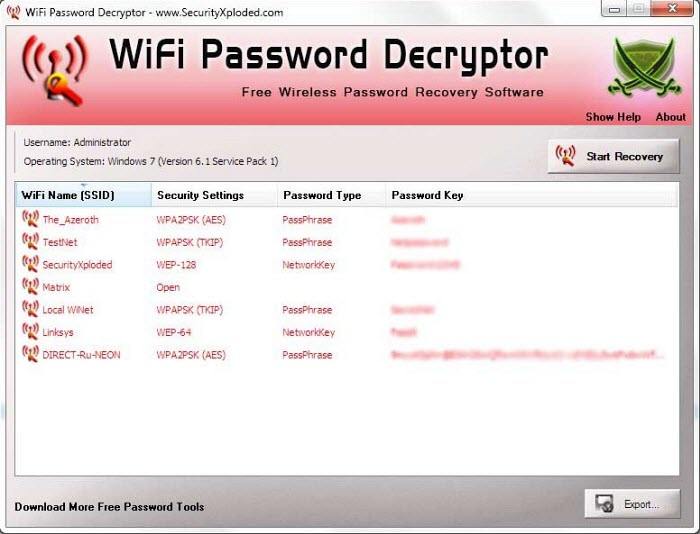Tech 4 All Wifi Hack Free Download
Getty Images/iStockphoto A few weeks ago, the United States Computer Emergency Readiness Team (US-CERT) issued an alert about state-supported Russian hackers carrying out attacks against a large number of home routers in the U.S. These hackers are organized, motivated and well-funded. They’re not a bunch of misanthropic nerds sitting in basements. They’re getting paid to steal your digital credentials. These Russian hackers reportedly are using known weaknesses to infiltrate residential routers and utilize them to get a foothold on a network. This is a big deal, so pay attention.
Tech 4 All Wi-Fi Hack.rar. Get link download Tech 4 All Wi-Fi Hack.rar. This file is hosted at free file sharing service 4shared.
When your router is compromised, a hacker can inflict damage, not just on the router itself, but on every connected device running on your network. Let that sink in for a moment. Any device that is using your home Internet is vulnerable. While the alert is new, the hackers have been doing this for some time. They might be stealing from you right now. Click here for a free check to see if your router has already been compromised by hackers. Harakteristika na medsestru dlya nagrazhdeniya obrazec 10.
More: The FBI wants you to do this one thing to your home router, now Once your router is hacked, it lets criminals execute these further attacks: Identify other vulnerable devices in the network. Read your gadget configurations. Map your internal network. Harvest usernames and passwords.
Impersonate administrators. Modify firmware. Modify operating systems. Change configurations. Spy on your traffic and redirect it through Russian-controlled servers.
Here are some ways to keep them at bay. Update the router’s firmware. Reviewed.com Your router’s firmware is designed to keep your network safe. If you don’t update the firmware, hackers can easily find flaws to exploit.
Updating firmware isn’t as hard as it sounds. You can find your router’s admin page usually using a browser; each setup is a little different, depending on your operating system and router model. Once you’re in the router’s admin page, find the section called “Advanced” or “Management” to look for firmware updates. Just download and apply. Check for router firmware updates at least once every three months. You will need your router’s password. If you don’t know your router’s admin password, no worries.

Click here for a site that lists the default passwords for 548 different router brands. This is why it’s vital to change the default router password. Every hacker worth his salt has access to all the default passwords of every router brand, so you need to create one of your own that's strong. More Kim Komando: How to keep mooches and spies off your Wi-Fi network and files Turn off remote administration “Remote administration” is the ability to use your computer from another location. You could log onto some other computer (down the block or in another country) and use the Internet to log onto your computer back home. This tool can be downright magical, especially if you’ve called tech support and you need a technician to fix something from the Philippines. But if hackers break in, they can also manipulate your computer in real time.
Related: Wi-Fi giving you a headache? Click here for 10 ways to fix common Wi-Fi problems. While you're in your router's administrator page, turn off remote administration for better security. You can find this under your router settings, usually under the “Remote Administration” heading. While you're at it, you can turn off older Internet management protocols such as Telnet, TFTP, SNMP and SMI.
Check your DNS settings IBM Security, Packet Clearing House and The Global Cyber Alliance have a free service to give you better security and privacy while accessing the Internet. It's called the Quad9 Domain Name System (DNS) service, and it is designed to protect Internet users from accessing sketchy websites known for spreading malware, stealing personal information and fraudulent activity. Each time you click on a Web link, Quad9 will check the site against IBM-X-Force's threat intelligence database of more than 40 billion analyzed Web pages and images. When set as the DNS server on the router or gateway level, Quad9 can protect smart appliances and internet-connected devices from cyberattacks by blocking known remote hosts responsible for botnets and malware infections. Click here to learn more about this free, essential security tool.
It takes just a few minutes to get protected. Turn on your guest network In theory, a “guest network” is designed for people visiting your house or office. This separate network keeps your devices separate from theirs, especially if you’re in the habit of file-sharing. You can do this by setting up a different Wi-Fi router or by simply enabling your router's 'Guest Network' option, a popular feature for most routers. This segregation will also work to protect your smart gadgets including cameras, lights and appliances. It’s not hard to set up and use a guest network.